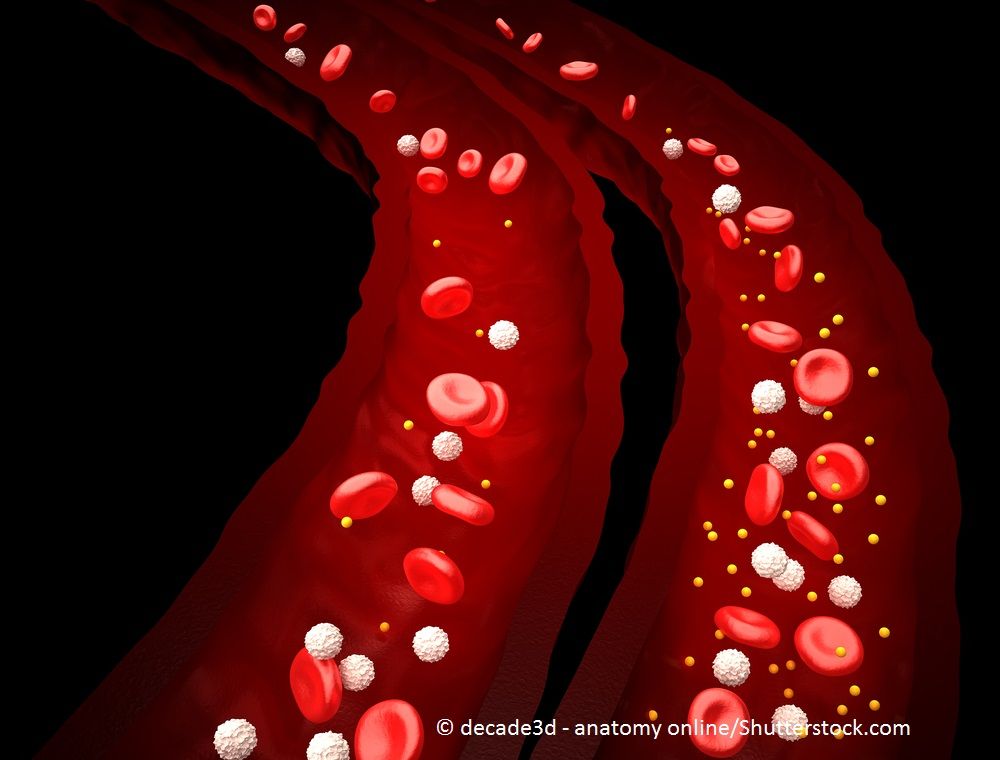4 New Diabetes Links
Associations between diabetes and heart failure, insulin resistance, cancer, and non-alcoholic fatty liver disease have been identified.
© decade3d - anatomy online/Shutterstock.com

Diabetes mellitus (DM) has strong associations with many other conditions. The reports that follow show recently identified links with heart failure, insulin resistance, cancer, and nonalcoholic fatty liver disease (NAFLD).
Please click to go to the next page.
Incretin-based Drugs May Not Increase Heart Failure Risk
Raison d’etre: Antidiabetic incretin-based drugs, including dipeptidyl peptidase 4 (DPP-4) inhibitors and glucagon-like peptide 1 (GLP-1) analogues, may increase the risk of heart failure.
Results: In a multicenter, observation study of close to 1.5 million patients (nearly 30,000 were hospitalized for heart failure), the rate of hospitalization for heart failure did not increase with the use of incretin-based drugs as compared with oral antidiabetic drug combinations. Results were similar for DPP-4 inhibitors and GLP-1 analogues.
Bottom line: In this analysis from large cohorts of patients with DM, incretin-based drugs were not associated with an increased risk of hospitalization for heart failure.
Please click to go to the next page.
Cancer Drug May Aid Insulin Resistance and Diabetes
Raison d’etre: The tyrosine kinase inhibitor imatinib (Gleevec), which has revolutionized treatment of chronic myeloid leukemia, also blocks phosphorylation of peroxisome proliferator–activated receptor (PPAR)γ at Ser273, one of the key mechanisms for antidiabetes drugs to target PPARγ.
Results: In high fat–fed mice, Gleevec improved insulin sensitivity without causing severe adverse effects associated with other PPARγ-targeting drugs. Gleevec also reduced lipogenic and gluconeogenic gene expression in the liver and ameliorated inflammation in adipose tissues.
Clinical implications: Gleevec appears to exhibit beneficial effects on both glucose/lipid metabolism and energy homeostasis by blocking PPARγ phosphorylation.
Please click to go to the next page.
Proteins Link Obesity and Diabetes with Cancer
Raison d’etre: Diseases of chronic inflammation or disordered metabolism, such as type 2 DM, may be related to cancer through shared mechanisms that regulate chromatin.
Results: Reducing levels in pancreatic beta cells of individual Bromodomain and Extra-Terminal (BET) proteins, previously shown to play a role in cancer, also may help patients who are obese and have DM.
Clinical implications: BET proteins provide a new pathway to connect adult-onset DM with cancer, so properly targeting BET proteins may be helpful for both diseases.
Please click to go to the next page.
Gestational Diabetes Strongly Associated With NAFLD
Raison d’etre: Insulin resistance is central to the development of NAFLD, and gestational DM is an early marker of insulin resistance.
Results: In a multicenter community-based longitudinal cohort study of 1115 women who underwent CT quantification of hepatic steatosis 25 years after entry, 11% reported a history of gestational DM and 7% met the CT definition for NAFLD at year 25. The crude risk of NAFLD at 25 years was more than 2.5-fold greater in women who had gestational DM than in women who did not.
Clinical implications: Gestational DM is a risk marker for NAFLD and represents an opportunity to identify women at risk for NAFLD at a young age.
Please click to go to the next page.
Summary:
• DPP-4 inhibitors and GLP-1 analogues do not appear to increase the risk of heart failure.
• The cancer drug Gleevec shows promise as a novel therapeutic agent for use in insulin resistance and type 2 DM.
• Newly discovered proteins may be linked to obesity-driven DM and to cancer.
• A history of gestational DM may help identify young women at risk and allow targeted strategies to prevent complications related to NAFLD.
Disclosures:
1. Filion KB, Azoulay L, Platt RW, et al. A multicenter observational study of incretin-based drugs and heart failure. N Engl J Med. 2016;374:1145-1154.
2. Choi SS, Kim ES, Jung JE, et al. PPARγ antagonist Gleevec improves insulin sensitivity and promotes the browning of white adipose tissue. Diabetes. 2016;65:829-839.
3. Deeney JT, et al. BET Bromodomain proteins Brd2, Brd3 and Brd4 selectively regulate metabolic pathways in the pancreatic β-cell. PLoS One. 2016;11(3):e0151329. doi: 10.1371/journal.pone.0151329. eCollection 2016.
4. Ajmera VH, Gunderson EP, VanWagner LB, et al. Gestational diabetes mellitus Is strongly associated with non-alcoholic fatty liver disease. Am J Gastroenterol.2016 Mar 22. doi: 10.1038/ajg.2016.57. [Epub ahead of print]